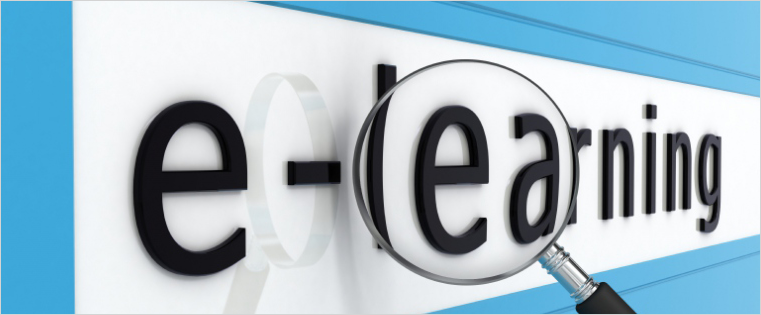20 Must Know Acronyms of E-learning – Part 1

We all know the e-learning industry is full of acronyms. Even the word e-learning itself is the shorthand for electronic learning. As an e-learning professional, it is important to be familiar with various acronyms used in the field of e-learning. Here, I would like to share some acronyms that are commonly used in e-learning.
1. LMS (Learning Management System)
It is a web-based technology platform that helps integrate the various parts of training including assigning, managing, administering, and monitoring both online and classroom sessions. An in-built reporting system, which maintains statistics about the courses available and the enrollment of learners to various courses, is present in most LMSs.
2. LCMS (Learning Content Management System)
It is a web-based technology and used to create, manage, and maintain the learning content. It also has the capability to store the content and retrieve older versions of it, whenever required. It can also be used to store and retrieve learning objects which can be reused.
3. SCORM (Sharable Content Object Reference Model)
It is a technical standard given by the Advanced Distributed Learning (ADL) for web-based training. SCORM is a combination of specifications and standards for e-learning. It interacts with LMSs and courses to support tracking of courses.
4. AICC (Aviation Industry Computer-based Training Committee)
It is an international association of technology-based training professionals and was founded to serve the aviation industry. It is a team, which develops guidelines for course development, course delivery and evaluation of computer and web based training technologies.
5. ISD (Instructional Systems Design)
It is a practice of designing effective training programs and independent of delivery format. Usually, the ISD process follows a process to achieve training goals that are effective and engaging by analyzing learning needs and developing a systematic curriculum.
6. LRS (Learning Record Store)
It is a place where learning records can be stored and acts a repository of learning records. An LRS can be accessed by a reporting tool or an LMS.
7. RLO (Reusable Learning Object)
A unit of learning content that is independent and stand-alone. An RLO can be used in multiple instructional contexts. RLOs help avoid the development of redundant learning materials. This saves time and results in optimal use of financial, technical, and human resources.
8. GUI (Graphical User Interface)
It is a way to present the training programs content, functions, and features using visual elements (such as icons, menus, controls and many more). It helps learners navigate through the course easily, and they can have a complete picture of the course.
9. CMS (Content Management System)
It is a software application that manages the process of designing, testing, approving, storing, and publishing e-learning content.
9. ADDIE (Analysis, Design, Development, Implementation, Evaluation)
It is a classic instructional development process with 5 phases, and these can be modified according to the type and requirements of the organization. It provides a means for sound decision making in order to determine the questions (such as who, what, when, where, why and how) of a learning program.
I hope you find this blog useful. I will share some more e-learning acronyms in my next blog. Please stay tuned.



![How Blended Learning Can Spruce Up Your Corporate Training [Video]](https://blog.commlabindia.com/hubfs/Imported_Blog_Media/blended-learning-game-changer-corporate-training-video.jpg)
![Blended Learning for Corporate Training: Overcome 3 Implementation Challenges [Infographic]](https://blog.commlabindia.com/hubfs/Imported_Blog_Media/blended-learning-implementation-challenges-solutions-info-v1.jpg)
